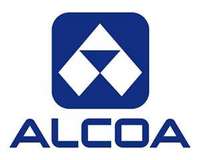PITTSBURGH--April 5, 2013: Alcoa today announced that its breakthrough "Alcoa 951" pre-treatment bonding technology--an enabler for adhesive bonding of automotive structures--has been licensed to Chemetall in an exclusive global distribution agreement. The Alcoa technology is the new pre-treatment bonding standard for aluminum sheet, extrusion and casting suppliers across the automotive industry. Chemetall is the leading supplier of surface treatments to the automotive industry, globally.
“The use of this technology is helping to enable greater use of aluminum throughout the industry and helping make mass-produced aluminum-intensive vehicles possible. This ultimately saves significant fuel for consumers who say fuel efficiency is a top factor in their purchase decision.”
The use of aluminum in cars is expected to nearly double by 2025 according to automotive original equipment manufacturers (OEMs), and today is already the second-most-used material to produce cars. As OEMs work to continue to make cars more fuel efficient, many are expanding aluminum use from heat exchangers, wheels, drive shafts, engine blocks, hoods and deck lids to developing aluminum intensive vehicles (AIVs) by converting the body in white, or body structure, to aluminum. As OEMs use aluminum body structures to improve fuel efficiency, new joining and assembly methods are required. "Alcoa 951" is a patented, non-chrome approach for enhancing bond durability and enabling more cost-effective, mass production of AIVs.
In customer trials, "Alcoa 951" has been proven to be up to nine times more durable than titanium zirconium applications used in the automotive industry in the past. These results led OEMs to specify "Alcoa 951" and request Alcoa to license it to other suppliers in the industry, hence the agreement with Chemetall. "Alcoa 951" technology is being incorporated into the $300 million automotive expansion underway at Alcoa's Davenport (Iowa) Works facility, scheduled for completion by the end of 2013.
'Alcoa 951' is a perfect example of Alcoa Technology Advantage at work to create value for our customers," said Kay Meggers, Alcoa Executive Vice President and Group President of Alcoa Global Rolled Products. "The use of this technology is helping to enable greater use of aluminum throughout the industry and helping make mass-produced aluminum-intensive vehicles possible. This ultimately saves significant fuel for consumers who say fuel efficiency is a top factor in their purchase decision."
"We look forward to partnering with Chemetall to provide ‘Alcoa 951' to help enable commercialization of adhesive bonding of aluminum structures in high-volume automotive applications. This, in turn, will drive lighter vehicle weights and enable the integration of sheet, extrusions, and castings to ultimately improve fuel efficiency," said Dr. Raymond Kilmer, Alcoa Executive Vice President and Chief Technology Officer. "The process was developed as a result of collaboration between the Alcoa Technical Center and our automotive business. We're excited to see it commercialized." The Alcoa Technical Center is the world's largest light metals research facility and is located outside Pittsburgh, PA.
About Alcoa 951 Adhesive Bonding
"Alcoa 951" employs an organic, environmentally-friendly system tailored for both the aluminum substrate and the structural adhesives used for joining. The pre-treatment delivers far superior bond durability compared to conversion coating systems such as the titanium zirconium often used in the past. In fact, customer trials show its durability is up to nine times stronger than titanium zirconium.
The surface treatment is applied through an immersion or spray application in which the organic components bond with oxides present on the metal surface. The molecular structure chemically binds aluminum oxide with one end, and adhesive with the other. This creates a strong link at the molecular level resulting in lasting, durable joints for automotive structures.
The minimal level of treatment on the surface makes it essentially "transparent" to downstream steps in the automotive manufacturing process such as forming, resistance spot welding and painting.
Other commercially available conversion coatings, which generally contain heavy metals and are measurably thicker, lead to potential environmental concerns and diminished performance in other steps in the manufacturing process. The attractiveness of "Alcoa 951" lies in its repeatability and its simplicity. It does not incorporate exotic components that threaten the ability to implement the product on a large scale, and it brings the type of benign environmental impact that addresses the need for the "cradle-to-cradle" life cycle required for aluminum.



